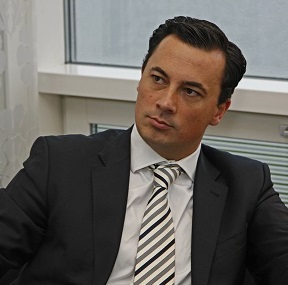Tell us a little bit about Valad Europe.
Valad Europe is an active value-adding commercial real estate investment management business, specialising in the office, retail, industrial and logistics sectors. As one of the largest independently owned investment managers in Europe with local teams based in each country in which it operates, Valad Europe offers clients a breadth of services comprising investment management, asset management and debt sourcing, all on a cross-border, multi-jurisdictional basis.
What has Valad Europe been up to in the past 18 months?
In the past 18 months we have successfully completed the refinancing of all our significant near-term loans, including a €1.1 billion refinancing of our DUKE joint venture with Lloyds Banking Group; refinancing of a €300 million senior debt facility for the European High Income Fund (EHI); and arranging a €200 million refinancing package with Lloyds Banking Group for the ECREL portfolio.
Valad Europe has also increased its bank workout activity, successfully completing the accelerated sell-down of the Kefren portfolio of 150 assets in Sweden. Over a two year period we fully recovered the senior debt and part of the junior loan, returning more than €450 million to debt holders. Our focused asset management strategy resulted in a 16% increase in income and a 21% increase in occupancy from over 445 new lettings and renewals, generating €13.6 million annual rental income.
At the end of 2011 we acquired a 49% equity position in the €250 million ECREL portfolio in Germany, the Netherlands and Nordics, as part of our overall strategy to build sustainable value and cash flow prior to the implementation of a five year disposal programme. This alignment of interests with existing investors has enabled us to generate €5.9 million of new annual income in the first six months of 2012 reducing the vacancy from 29% to 19%. It was also instrumental in helping us to secure a €200 million refinancing package.
With a wall of over €35 billion of CMBS due to hit maturity over the next two years, we have been heavily involved in working with various stakeholders to create solutions to these highly complex and diverse situations. Most notably, we put together a consensual restructuring proposal as part of a dual-track strategy earlier this year for the €360 million Uni-Invest Opera Finance workout portfolio. Our consensual strategy secured the positive vote of the Class B, C and D Noteholders but failed to secure the 75% threshold from the Class A Noteholders. Our proposal would have allowed noteholders to retain control while providing a return of capital to both senior and junior noteholders.
In your opinion, what is the outlook for the real estate market in the UK/Europe?
The ongoing market volatility in the UK and Eurozone should continue to provide some interesting investment opportunities for those with access to equity and debt.
Property investors are currently facing a major dilemma. The prolonged nature of the current bear market has meant that across asset classes the prices for a range of traditional safe havens like Government Bonds have sunk to historic lows. While many risk-averse real estate investors have focused on prime assets, the yield gap between prime and secondary assets in Europe is now historically wide, compounded by a lack of debt for secondary assets.
DTZ recently estimated that the debt funding gap is more than €140 billion, predominantly as a result of new rules introduced by the European Banking Authority which have significantly increased new capital reserve ratios. While banks continue to workout their loans there is some hope of narrowing the debt funding gap as a number of non-bank lenders increase their activities in Europe. Most notably, both UK and US insurance groups have entered the market and a number of private equity debt funds have launched, with some of that debt being made available for non-prime assets.
On the equity side, it is important to be able to provide investors with the appropriate strategy and fundamental to this is the ability to match equity to a suitable risk / return profile. For new investments, investors will look at proposals in great detail to assess the potential risks and returns. This means that going forward there will be more emphasis on a compelling seed portfolio, rather than a strong pipeline. As a consequence, the practical route to launching new funds is more likely to be achieved with separate single account mandates investing in a seed portfolio, which may ultimately be expanded into a fund in a second phase.
What is your strategy for the future?
We are actively looking at new opportunities where we can leverage our platform and experience to add new bank workout mandates, single account equity mandates, portfolio acquisitions and selective longer term acquisitions. Over the next 12 months we expect to be working on more CMBS and bank workouts. We are also in the process of expanding our investor base to the Far East, Middle East and Africa through the addition of single account mandates with a focus on particular geographies and/or sectors.















